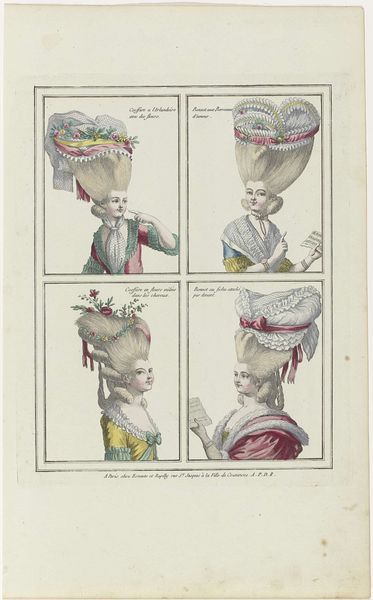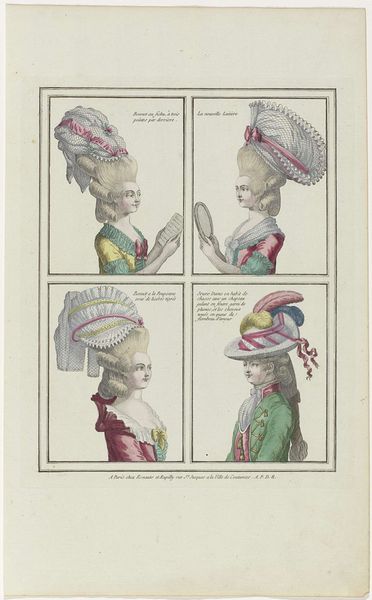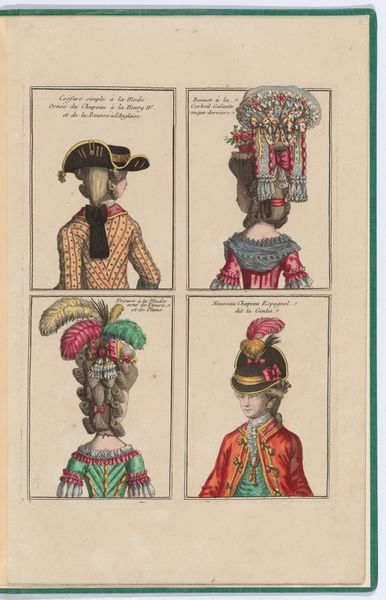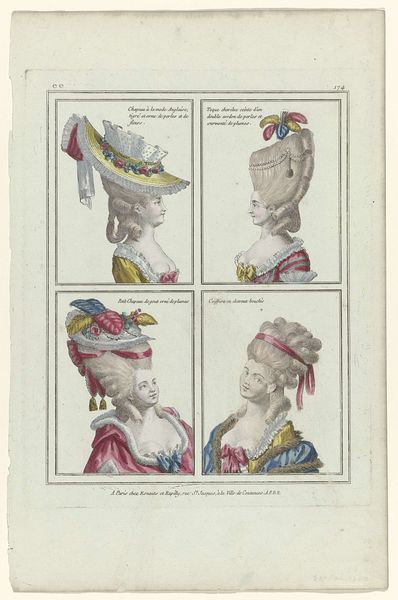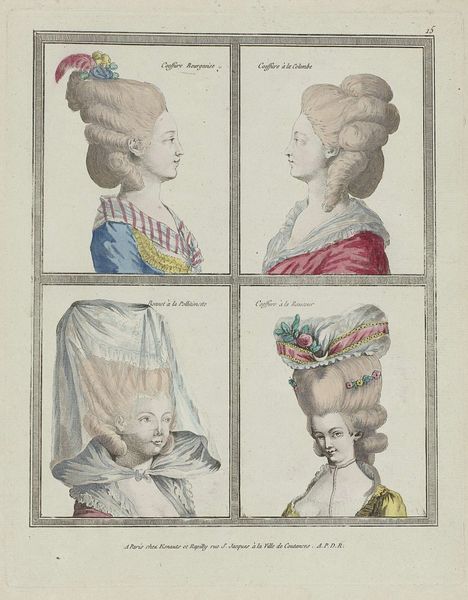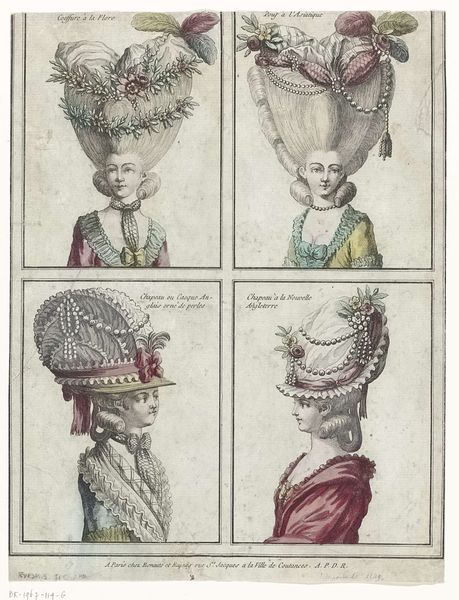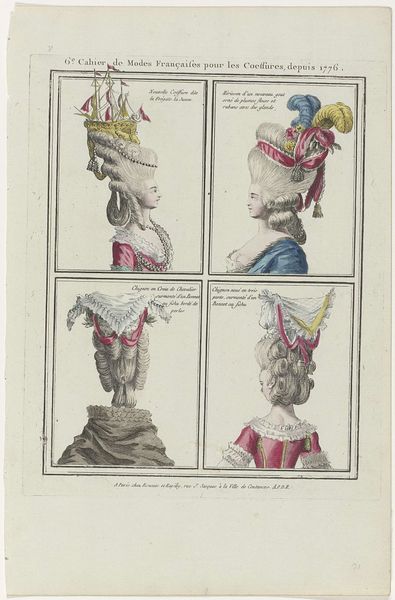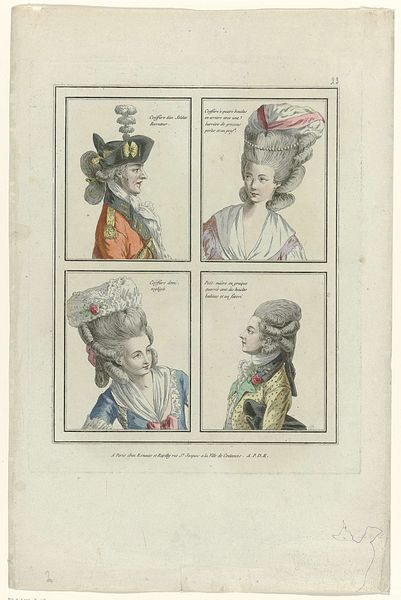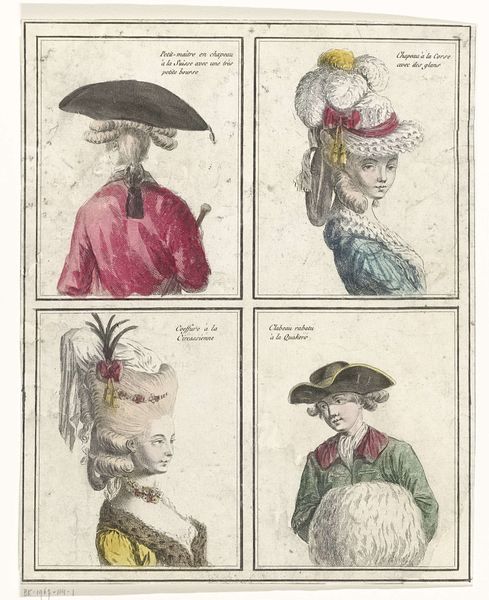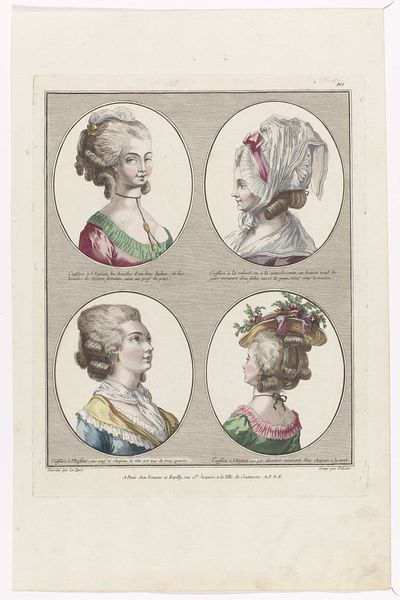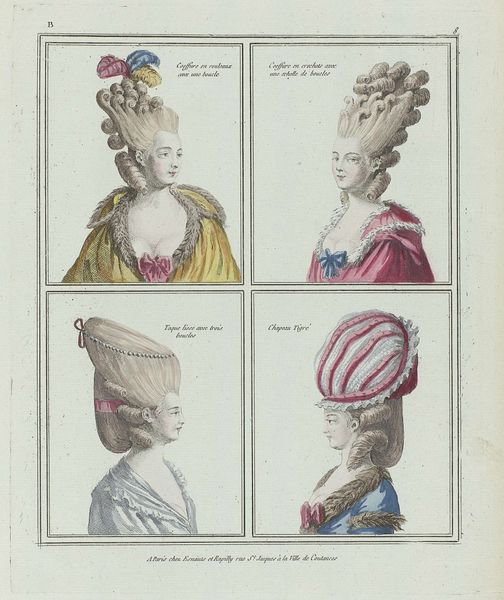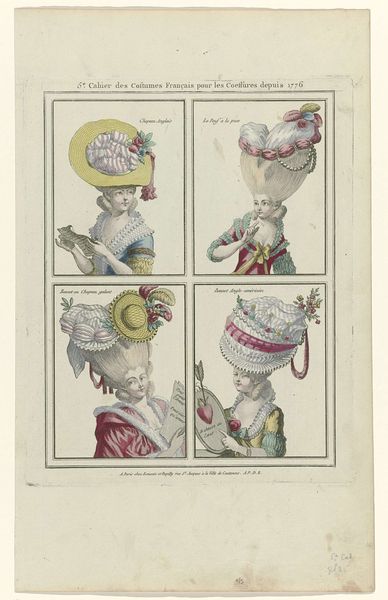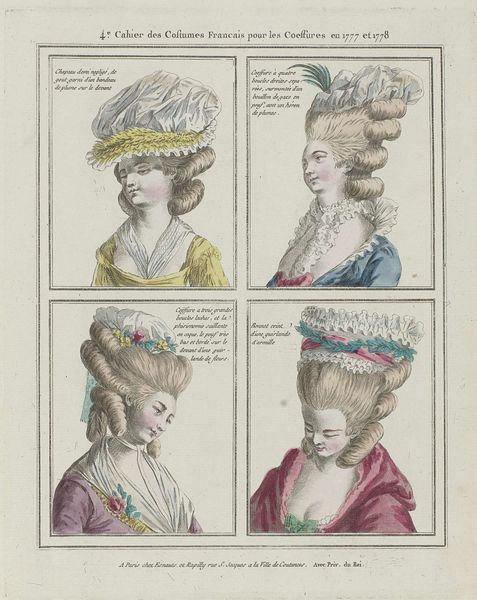
Gallerie des Modes et Costumes Français, 1780, ee 170 : Coeffure à la Mingrelien (...) 1780
0:00
0:00
Dimensions: height 276 mm, width 220 mm
Copyright: Rijks Museum: Open Domain
Curator: Let's take a look at this striking print entitled "Gallerie des Modes et Costumes Français, 1780, ee 170 : Coeffure à la Mingrelien (...)" dating to 1780. It presents four studies of fashionable women and their towering hairstyles. It combines drawing, print, and watercolor techniques. Editor: Wow, flamboyant doesn't even begin to cover it! It’s a veritable celebration of excess, teetering precariously between high fashion and outright absurdity. Curator: Precisely! It exemplifies Rococo aesthetics and is valuable for what it says about social structures and expectations for women in late 18th-century France. It provides us with a snapshot of a society defined by both immense privilege and brewing revolution. The elaborate hairstyles, seemingly defying gravity, speaks volumes about the aristocracy's detachment from the realities faced by the majority of the population. Editor: These weren't merely decorative choices, were they? The ‘Coeffure à la Mingrelien’, for example. Was it really as simple as liking the cut or how was it a language, a social declaration? This hairstyle probably carried layered cultural meanings linked to the political and socio-economic powers operating back then, right? And where is Mingrelia? How was it perceived at the time? It makes me think of conversations surrounding performativity. How much of our appearance, then and now, is performative to meet social norms? Curator: Absolutely, we must remember these were women operating within confined social roles, whose power was exerted through manipulation of visual and material culture. It's through dress, conversation, and social networking within the court that a woman exercised agency. And these fashion plates offered a form of aspirational image but, of course, completely divorced from any discussion of the labour required to achieve this aesthetic ideal. This makes me think about the racialised and gendered aspects of the service that provided such lifestyle to privileged individuals. Editor: Seeing it through that lens, it’s less an image of beauty, more an encapsulation of systemic inequality and control over a woman’s existence, right? Like each additional feather is not just decoration, but also represents the socio-economic weights and restraints these women operated under. I mean it's a wild ride from frivolous delight to critical engagement! Curator: And this image serves as a prompt for continuous reflection, even nowadays. It reveals how our readings of imagery can challenge assumptions and prompt important dialogues concerning power, gender, and privilege. Editor: It sure does! I'll definitely carry forward that weightier reflection as I view similar pieces going forward. Thanks for sharing.
Comments
No comments
Be the first to comment and join the conversation on the ultimate creative platform.
